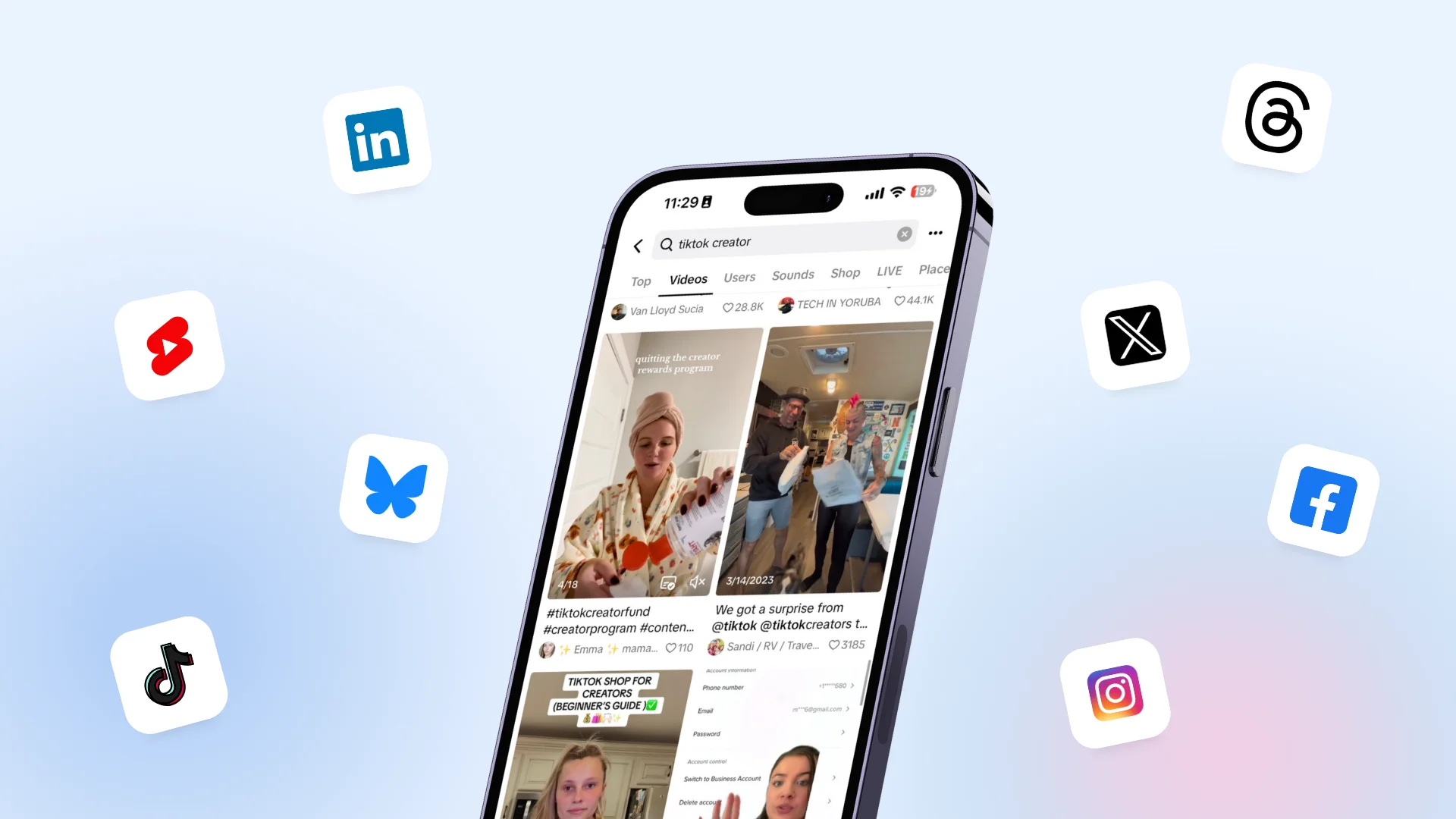New

Turn Your DMs Into Lead Gen!
Learn how to collect lead data from your DMs such as email addresses, phone numbers, and more right from your social inbox. If you are not yet automating your DMs your competitors are outpacing you.

How Something Social Saved 75% of Their Time and Increased Revenue by 15%
See how a fast-growing agency improved operations, cut down hours of manual work, and unlocked new revenue opportunities with Vista Social.
New

50 Unique Social Media Ideas for Consistent Content Creation
Discover 50 unique social media post ideas to engage your audience, grow your brand, and maintain a consistent content strategy with ease!

Mastering Content Reuse: The Key to a Consistent and Sustainable Posting Strategy
Microblog
A microblog is a short piece of content intended for quick audience interactions.
Microblogging is a combination of instant messaging and content production. With a microblog, you share short messages with an online audience to improve engagement. Social channels like Twitter, Instagram, Facebook and Pinterest offer popular platforms for microblogging.
What Does a Microblog Look Like?
Microblogging makes communicating with audiences quick and easy. Rather than writing pages of text, a microblog allows for quick, conversational connections with customers.
Short microblogging messages appear in various content formats, including audio, video, images and text. The trend for microblogging began when social media emerged to provide quicker ways for companies to engage customers. Microblogging also keeps customers in the loop about the longer content on your website.
Types of Microblogging Platforms
Most brands are already using microblogging platforms in their content plans.
As more customers strive to develop relationships with companies, short and frequent social posts are key. Additionally, microblogging appeals to the mobile browsing community. Examples of microblogging platforms include:
- Twitter: One of the most well known channels in the microblogging world. Twitter is a quick and streamlined way to share short posts, GIFs, article links, videos and more.
- Pinterest: Companies on Pinterest link to products, articles and other useful information for audiences. Descriptions allow for quick connections to content.
- Instagram: A visual form of microblogging, Instagram allows organizations to share stories and snapshots as part of an online narrative.
- Facebook: Facebook is an effective microblog channel, as users can share text, live videos and more to connect with customers.
- Tumblr: Tumblr is another highly popular microblogging platform. Users can tag specific topics to attract attention from targeted audiences and draw in a niche.
Benefits of Microblogging
Most companies are already microblogging without realizing it.
A microblogging strategy is a key element of building connections with modern audiences. Some of the benefits of a microblog include:
- Frequent posts: Consistency is key in content marketing. Microblogging allows companies to share shorter content faster, creating more conversational connections with customers.
- Less time developing content: Some companies struggle to create lengthy article content regularly. Microblogs maintain relationships in between the more robust blogs, videos and infographic posts.
- Real-time sharing: In a fast-paced environment, microblogging allows companies to share time-sensitive information. A quick tweet communicates information about a sale, breaking news, and other crucial updates.
Microblogging for a Mobile Audience
Try Vista Social for Free
A social media management platform that actually helps you grow with easy-to-use content planning, scheduling, engagement and analytics tools.
Get Started Now52.2% of website traffic worldwide was generated by mobile devices in 2018.
As audiences continue to turn to mobile solutions as an immediate source of information, microblogging is crucial. Consumers find it challenging to interact with lengthy posts on mobile. However, microblogs offer instant access to updates and trending news. A microblog makes brand relationships stronger in the mobile world.
Many microblogging platforms also create opportunities for two-way interactions. Microblogging channels like Twitter encourage interactions through comments, retweets, liking and more. When used correctly, a microblog facilitates greater engagement than a traditional post, such as a blog.

stronger relationships on social
Vista Social helps you understand and reach your audience, engage your community and measure performance with the only all-in-one social media management with easy-to-use features like publishing, engagement, reviews, reports and listening.